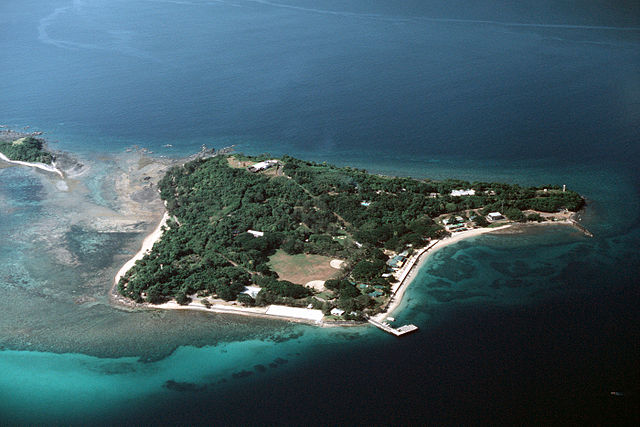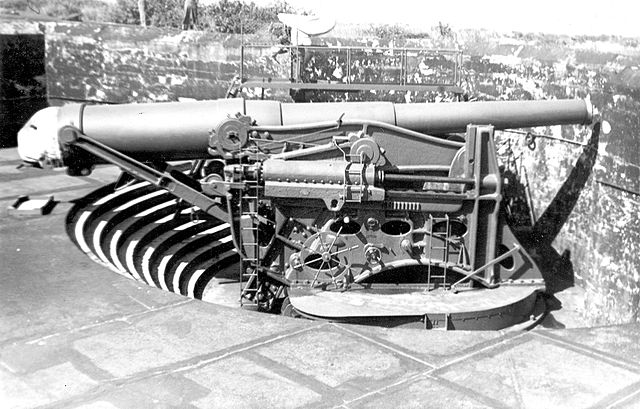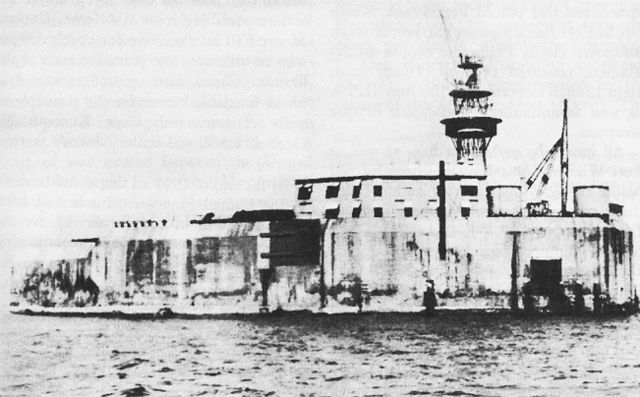Fort Wint was part of the harbor defenses of Manila and Subic Bays built by the Philippine Department of the United States Army between 1907 and 1920 in response to recommendations of the Taft Board prior to the non-fortification clause of the Washington Naval Treaty. Fort Wint was located on Grande Island at the entrance of Subic Bay, approximately 35 miles (56 km) north of Manila Bay. The fort was named for Brigadier General Theodore J. Wint. As specified in the National Defense Act of 1935, this was one of the locations where coastal artillery training was conducted. A battery of the 60th Coast Artillery (AA) was stationed here.
Fort Wint
Splinter-damaged 6-inch (15-cm) United States M1905 disappearing gun at Battery Hall, Fort Wint.
Buffington-Crozier carriage of the gun shown above.
Identification engraving on the muzzle of the gun shown above.
Harbor Defenses of Manila and Subic Bays
The Harbor Defenses of Manila and Subic Bays were a United States Army Coast Artillery Corps harbor defense command, part of the Philippine Department of the United States Army from circa 1910 through early World War II. The command primarily consisted of four forts on islands at the entrance to Manila Bay and one fort on an island in Subic Bay.
The harbor of Manila and surrounding areas
12-inch (305 mm) mortars of Battery Way, Fort Mills in 2007.
12-inch (305 mm) gun on a disappearing carriage, generally similar to other 10-inch through 14-inch disappearing batteries.
Fort Drum. Temporary wooden barracks on the fort's deck are visible near the fire control tower.








